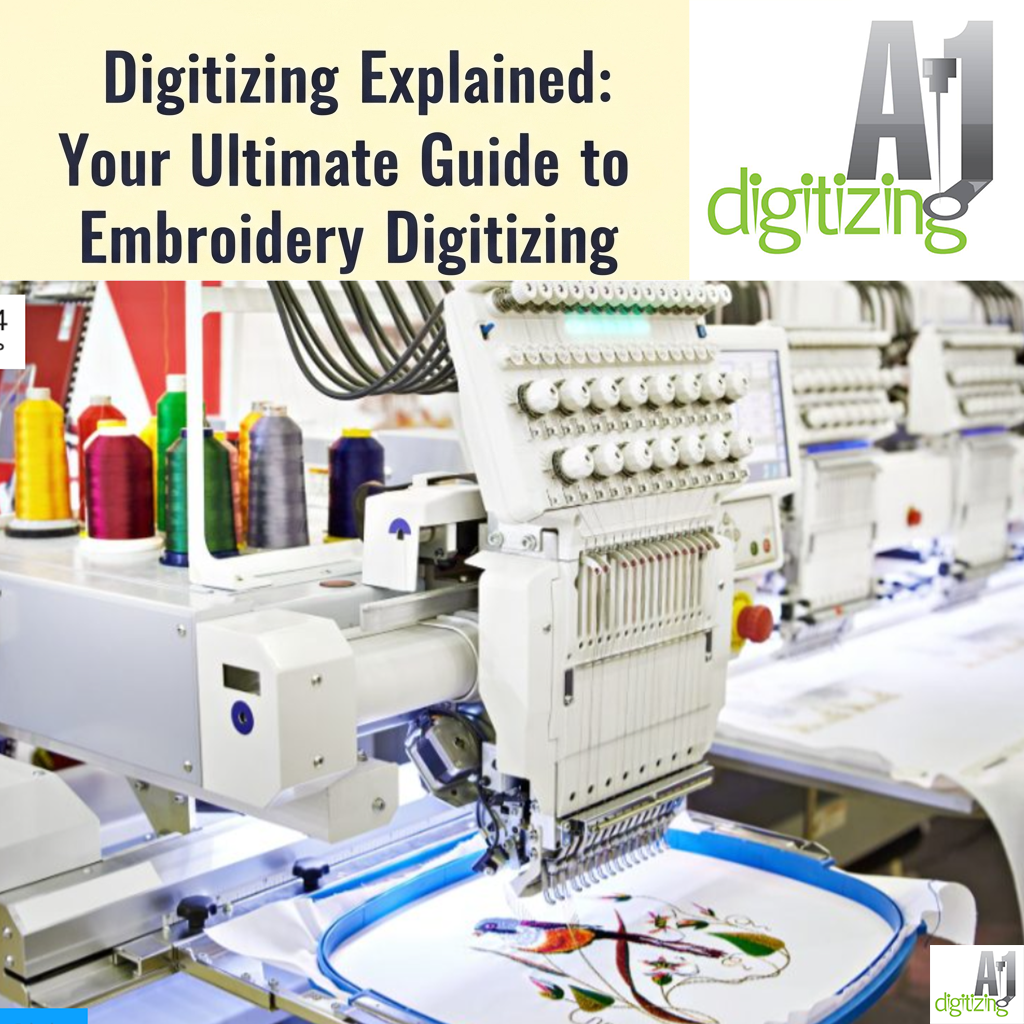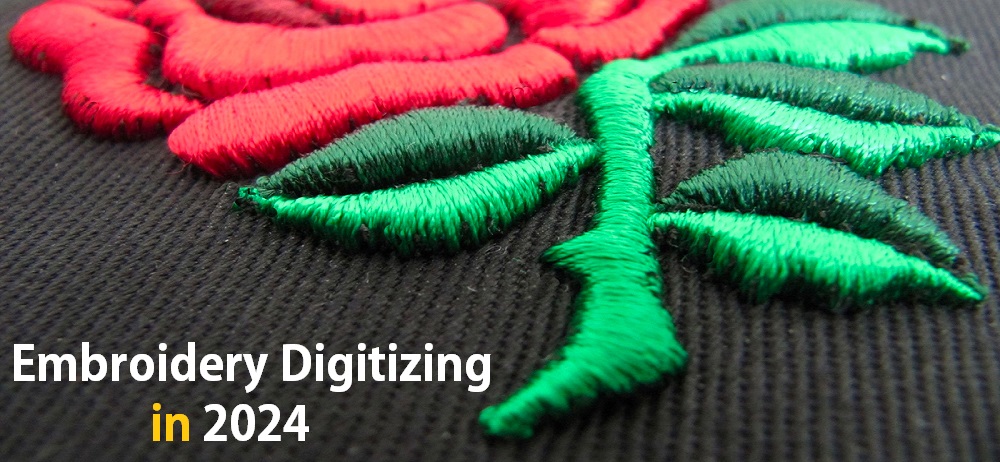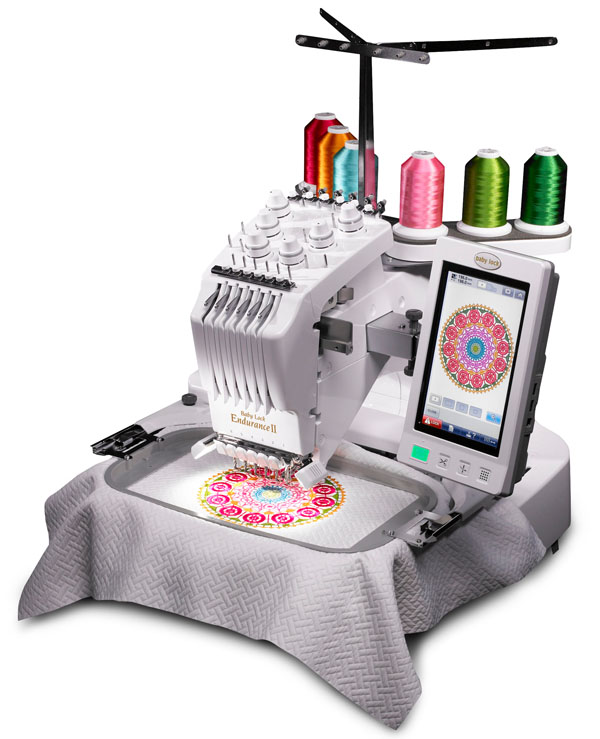
Ever wondered how those intricate designs you see on T-shirts, caps, or uniforms get there with such perfect precision? It looks almost magical, doesn’t it? Well, behind every crisp, beautiful embroidery design lies a crucial, often overlooked, first step: digitizing.
At A1Digitizing, we live and breathe this magic. We know that the quality of your finished embroidery hinges entirely on how well your design is digitized. Think of it as the blueprint for your embroidery machine – without a perfect blueprint, even the best builder can’t create a masterpiece.
So, What Exactly is Digitizing?
In simple terms, digitizing is the process of converting your artwork or logo into a special file that an embroidery machine can understand and stitch out. It’s not just about taking a picture and pressing a button. It’s about translating a visual design into a detailed set of instructions for the needles, telling them exactly where to go, what kind of stitch to make, how dense the stitches should be, and in what order.
Why is this so essential? Because an embroidery machine can’t just “see” an image. It needs precise coordinates and commands to perform its work. Without proper digitizing, your machine might stitch incorrectly, creating messy, unappealing, or even damaged embroidery. It’s all about quality control and making sure the machine speaks the right language.
The Digitizing Process: Step-by-Step
Good digitizing isn’t rushed; it’s a meticulous process that requires skill and an artistic eye. Here’s a peek into how it’s done:
1. Artwork Preparation
First, we start with your design. This could be a JPEG, PNG, vector file, or even a hand-drawn sketch. The clearer and higher quality the original artwork, the better the final digitized file will be. We’ll make sure it’s ready for conversion, sometimes cleaning up edges or refining details to ensure the best possible outcome.
2. Software & Tools
Our expert digitizers use specialized digitizing software. While the software provides the tools, it’s the human touch and understanding of embroidery that truly bring a design to life. This isn’t an automated process; it’s a skilled craft.
3. Stitch Types & Effects
This is where the magic really happens! We decide which stitch types (like satin, fill, run, or walking stitches) are best suited for different parts of your design. For example, a wide area might use a “fill” stitch for coverage, while outlines might use “satin” or “run” stitches for crispness. We also consider effects like gradients or textures to add depth and dimension to your embroidery.
4. Density & Underlay
These are critical for a professional finish. Density refers to how close together the stitches are, affecting how solid and rich your design looks. Underlay stitches are hidden stitches placed beneath the main design. They act like a foundation, stabilizing the fabric, preventing puckering, and giving the main stitches a smooth, even surface to lie on. Without proper density and underlay, your embroidery can look flimsy or distorted.
5. Quality Control & Testing
Before we hand over the digitized file, it goes through a rigorous quality check. We often run “stitch simulations” to see how the design will look on the fabric and catch any potential issues. Our goal is to provide a file that will stitch out perfectly the very first time.
Why Professional Digitizing Matters
You might be thinking, “Can’t I just use a free converter online?” While some basic tools exist, they simply can’t replicate the precision and expertise of professional digitizing. Here’s why investing in expert digitizing is a game-changer:
- Superior Quality: Poor digitizing leads to messy, puckered, or distorted embroidery. Professionals ensure your design looks sharp, clean, and vibrant.
- Cost-Effectiveness: It might seem counterintuitive, but good digitizing saves you money in the long run. Fewer errors mean less wasted fabric, thread, and machine time.
- Machine Compatibility: A professionally digitized file is optimized to run smoothly on various embroidery machines, minimizing thread breaks and operational issues.
- Design Integrity: We preserve every detail of your original artwork, ensuring that the final embroidered design accurately reflects your vision.
Common Applications of Digitizing
Digitizing is the backbone of so many custom embroidery projects. You’ll find it everywhere, including:
- Apparel: Uniforms, T-shirts, polo shirts, jackets, caps, hats – anything you can wear!
- Patches & Badges: From scout badges to corporate logos.
- Promotional Items: Bags, towels, blankets, and other branded merchandise.
- Home Decor: Custom linens, cushions, and decorative items.
Why Choose A1Digitizing for Your Digitizing Needs?
At A1Digitizing, we pride ourselves on being more than just a service provider; we’re your partners in creating stunning embroidery.
- Experienced Digitizers: Our team consists of highly skilled professionals with years of experience understanding the nuances of stitch types, fabric behavior, and machine requirements.
- Fast Turnaround: We know deadlines are important. We offer quick service without compromising on quality, ensuring you get your files when you need them.
- Competitive Pricing: We believe in providing top-notch digitizing services that are accessible and offer great value for your investment.
- Customer Satisfaction: Your vision is our priority. We work closely with you to ensure the final digitized file perfectly matches your expectations.
Ready to Transform Your Designs?
Don’t let poor digitizing hold back your embroidery projects. Trust the experts at A1Digitizing to provide you with flawless, machine-ready files every time.
[Get a Free Quote Today!] https://a1digitizing.com/
Conclusion:
Digitizing might be a behind-the-scenes process, but its impact on the final embroidery is undeniable. It’s the critical link between your creative design and the physical stitches. By choosing professional digitizing, you’re ensuring that your vision is realized with the precision, quality, and beauty it deserves. At A1Digitizing, we’re committed to making that happen for you, one perfect stitch file at a time.



